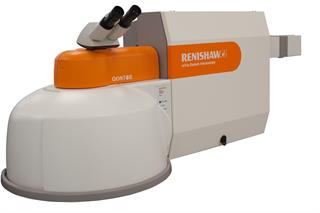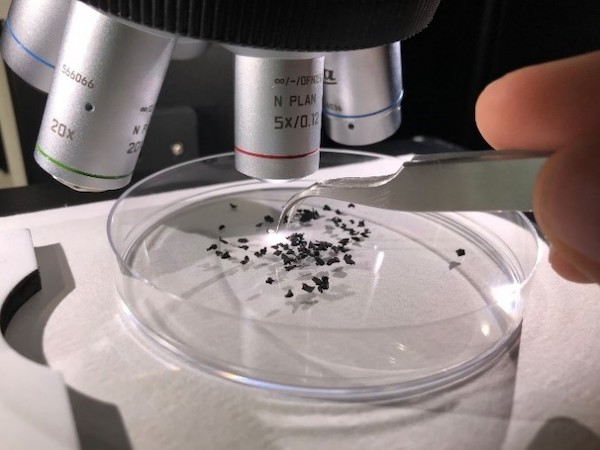Channels
Special Offers & Promotions
Renishaw Technology Used to Identify Microplastics in the Environment
Could rubber and plastic from tyres, washing into rivers and streams, be contributing to pollution in waste water? A group of scientists from Denmark are using a system from Renishaw to find out.
Microplastics are small, hard-to-spot, particles that make their way—from products and packaging—into the environment and cause significant pollution. The Danish Technological Institute (DTI, Aarhus, Denmark) is using a Renishaw Raman spectroscopy system to characterise the extent of microplastic pollution entering Danish wastewater and rainwater systems.
DTl is a not-for-profit organisation that works with private and public-sector companies to develop and implement new technologies, including removing plastic particles from the aqueous environment. It has already developed a valid research method to determine the presence of microplastics, which are difficult to identify and to characterise.
Morten Bormann Nielsen and his colleagues in the Life Science Division are currently developing new technology and methods for use in the environmental sector. When describing their work, Dr Nielsen said, “At scales below 100 µm (the width of a hair), it is essentially impossible to determine whether a particle is made of plastic, rubber, stone, glass or organic matter, based on its visual characteristics alone. Therefore, one must use a characterisation technique that yields chemical information about the investigated sample. Doing otherwise will lead to either gross over- or underestimation of the number and types of microplastic present in a sample.”
 To overcome this issue, the research group chose a comprehensive analysis system in the form of a Renishaw inVia™ Qontor® Raman microscope. They already have over ten years of experience working with Renishaw Raman systems.
To overcome this issue, the research group chose a comprehensive analysis system in the form of a Renishaw inVia™ Qontor® Raman microscope. They already have over ten years of experience working with Renishaw Raman systems.
Dr Nielsen continued, “We wished to characterise the extent of microplastic pollution entering Danish wastewater and rainwater systems, as well as the degree to which these particles can be retained with different technologies. We also wanted to be able to identify microplastic and microrubber particles from tyres, as the Danish Environmental Protection Agency has estimated that up to 60% of all microplastics that enter the ocean from Denmark originate from this source – primarily via rainwater run-off from roads.”
Ensuring valid microplastic counts from environmental samples is extremely challenging, partly because the particles of interest constitute such a minute fraction of each sample (on the order of 150 milligrams per cubic metre of waste water). During isolation of the plastic particles, care must be taken to avoid contamination, and organic matter must be removed so it does not shield the particles. This requires a delicate chemical process that does not degrade the particles. DTI has the high level of expertise and advanced equipment required to achieve this.
They use an inVia Qontor Raman microscope because it allows them to carry out highly automated and efficient experiments on samples containing microplastics. There are many essential features of the inVia system that make this possible, most notably large area optical microscope montages for particle finding, batch Raman measurements with automatic stage movement to the centre of each particle, and automatic focusing on the uneven particles with LiveTrack™ focus tracking technology.
Dr Nielsen said, “The speed of the inVia Qontor system is an essential part of being able to obtain chemical information on the many thousands of particles that are naturally present in samples taken from the environment. Despite sample preparation steps designed to remove sand and organic matter, the vast majority of all microscopic particles in wastewater and rainwater are still not plastic. Because of this, it is essential to measure many thousands of individual particles in the sample to get statistically valid results. Using the features of the inVia Qontor system it is possible to run such measurements overnight, saving us a lot of valuable time.
“The inVia system is extremely versatile when it comes to chemical characterisation across all life science-related fields. I struggle to think of any other single instrument that is as useful across samples as diverse as pharmaceuticals, plastics, wood-coatings, bacteria, tissue or inks. We sometimes compare it to a synchrotron, in that it really allows you to collect vast amounts of high-quality data in a very short amount of time – only this one fits on a table and not on a football field. Aside from the high-quality spectroscopy that the system delivers, the motorised stage is my favourite part of the system. Throughout my scientific career I have used a lot of different brands of xy-stages, and very few of these come even close to the reliability and speed of the Renishaw stage. Being such an essential part in enabling both batch and mapping measurements, it is worth highlighting.”
The DTI has already successfully developed and implemented a method for quantifying microplastics in wastewater and used it to demonstrate a retention rate of at least 99% in two Danish wastewater treatment plants | More
They have further developed the measurement protocol so that it can correctly differentiate between fine particles of tyre, asphalt and organic matter. As a result, they are very close to being able to fully characterise all particles in a sample and classify them as microplastics, microrubber or of natural origin – all using the same method and without needing intervening sample preparation. As far as they are aware, this has not been done anywhere else before.
Their combined method is now being used to quantify the amount of microplastics and microrubber in rainwater at different locations in Denmark. An example highlighting all particles larger than 10 µm, classified according to their type, is given in Figure 1. Here, the different plastic types identified are highlighted in colour, while all non-plastic particles are black. Of the more than 4000 particles measured, only 33 match one of the eleven most commonly used reference plastic types, underscoring the need for very thorough sampling. Examples of recorded spectra from each plastic particle and the matched reference spectrum for four types of plastic are shown as insets in Figure 1: Orange: PTFE (Teflon™), Green: Polyethylene terephthalate (polyester), Red: Polyethylene and Cyan: Polypropylene.

Figure 1: Microscope montage, measuring 5.2 mm by 5.3 mm, of a rainwater sample, after post-processing to identify all particles larger than 10 µm. The vast majority of the particles are not plastic (black). The inserts show microplastic particles identified by spectral matching to different reference plastic types. Orange: PTFE (Teflon™), Green: Polyethylene terephthalate (polyester), Red: Polyethylene, Cyan: Polypropylene.
more on the inVia confocal Raman microscope
Media Partners



